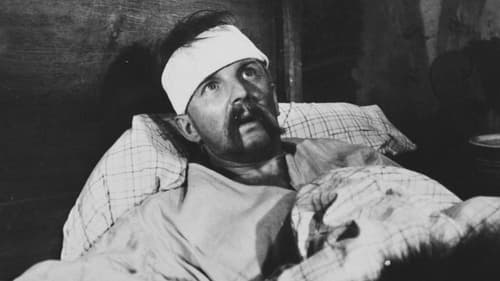
Sound
Stefan Starzyński, the mayor of Warsaw, organizes life in the capital in September 1939 and lift the inhabitants' spirits via radio announcements. After the surrender, he does not use his last chance to escape.

Sound
A stylish Louis XIV chair leaves the interior of the house and exposes itself to the forces of nature. It falls prey to a chainsaw that turns everything into a mass of identical, practical objects.

Sound
Short animation by Alina Maliszewska about two lovers trying to kill themselves

Sound
The second animated work from filmmaker, sculptor and painter Jerzy Kalina. Using multi-plane techniques mixed with paper animation and coloured grains (an element found in his first film, ...i stała się światłość, which I shall upload shortly), W trawie is a fantastical exploration of the world beneath our feet.

Sound
Jerzy Kalina's first film, animated using coloured grains to depict a fantastical, vividly coloured genesis. The creation of the world and the dawn of life in under ten minutes.

Sound
The story of a Pogorzelski nobleman who settled in the castle in Samsonów to renovate a damaged building. However, he is disturbed by the ghost of the former owner.

Sound
Short TV film upon the story of Ludwik Niemojski of the same title, which was a part of his "Incredible Stories". It tells about Bartolomeo, brilliant chess player, who had ruined his private life because of his passion for chess.

Sound
Ala is unable to settle down and often changes husbands. She introduces each newly married spouse to her mother.

Sound
A short documentary made in 1963 by Jerzy Bossak and Wacław Kaźmierczak featuring unique archival footage of the Jewish Ghetto of Warsaw. The Warsaw Ghetto (pol. “Getto Warszawskie” ) was the largest of all Jewish Ghettos in Nazi-occupied Europe during World War II. From there, about 254,000 Ghetto residents were sent to Treblinka extermination camp during the three months of summer 1942.

Sound
A visit in the painting studio of Teofil Ociepka, a Silesian naive painter. The raw landscape of Silesia contrasts with the colorful, fantastic world of his imagination.

Sound
The Deaf Mime Ensemble prepares the premiere of the Parasolki play at the Provincial Cultural Center in Olsztyn. Actors communicate with each other using sign language and they communicate with the audience with facial expressions and gestures.

Sound
A boy plays alone in a well of a big city yard. His mother, being in their tenement flat, passes him an empty bottle using a string. The boy has to go to a shop. His alcohol fun begins – at an off-licence shop, at a purchasing centre, at a gate.

Sound
1944. Communist militiaman take a post in a little town in the east of Poland. He has to stand against his own men that are not happy with new authorities.

Sound
Little heroine, a music school student, wanders through the backstreets of Warsaw's Old Town and discovers a world to which others have no access. It is a world of extraordinariness and beauty of sounds. And these are sounds that are the most important thing for the girl – the hubbub of children, the sounds of the street, the puffing of a tractor, the tuning of an organ, the sweeping of a broom and the sound of jets flying overhead.

Sound
A Pole incorporated into the Wehrmacht deserted, hiding in a coal mine ...

Sound
Polish documentary about Armenia.

Sound
The final film produced by Warsaw’s Documentary Film Studio is an epic re-enactment of a treacherous mission by the Voluntary Tatra Mountain Rescue Service to aid colleagues stranded behind enemy lines at the close of World War II (several real participants feature in the film). Based on a short story about the rescue by Adam Liberak, Munk’s final “documentary” is also arguably his first major exercise in the craft of narrative filmmaking.

Sound
A recording of the performance of the symphonic poem entitled Fairy Tale by Stanislaw Moniuszko at the ‘Ursus’ Factory in Warsaw. It took place in 1952 and was performed by the Warsaw Philharmonic Orchestra under the baton of Witold Rowecki.

Sound
The documentary shows the work of journalists and the importance of the press in building socialism. It is an exemplary implementation of the socialist-realist convention imposed on Polish cinema in 1949, in which all elements of the film structure were subordinated to the persuasive function.















